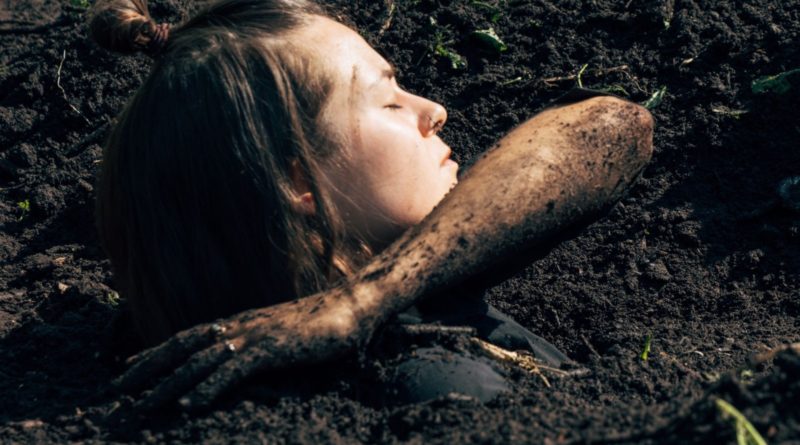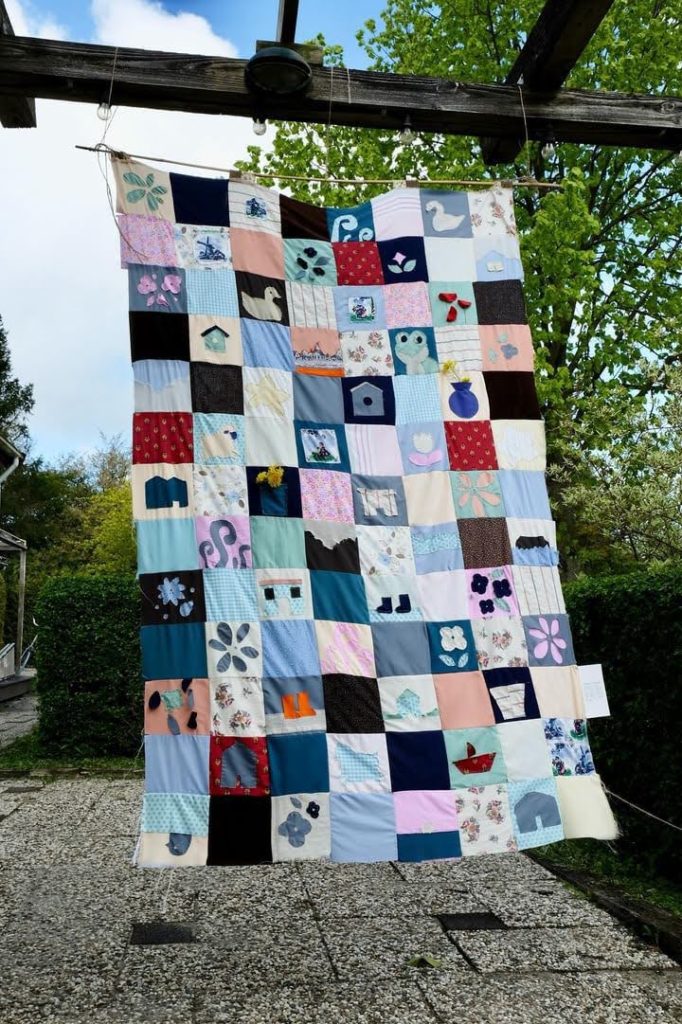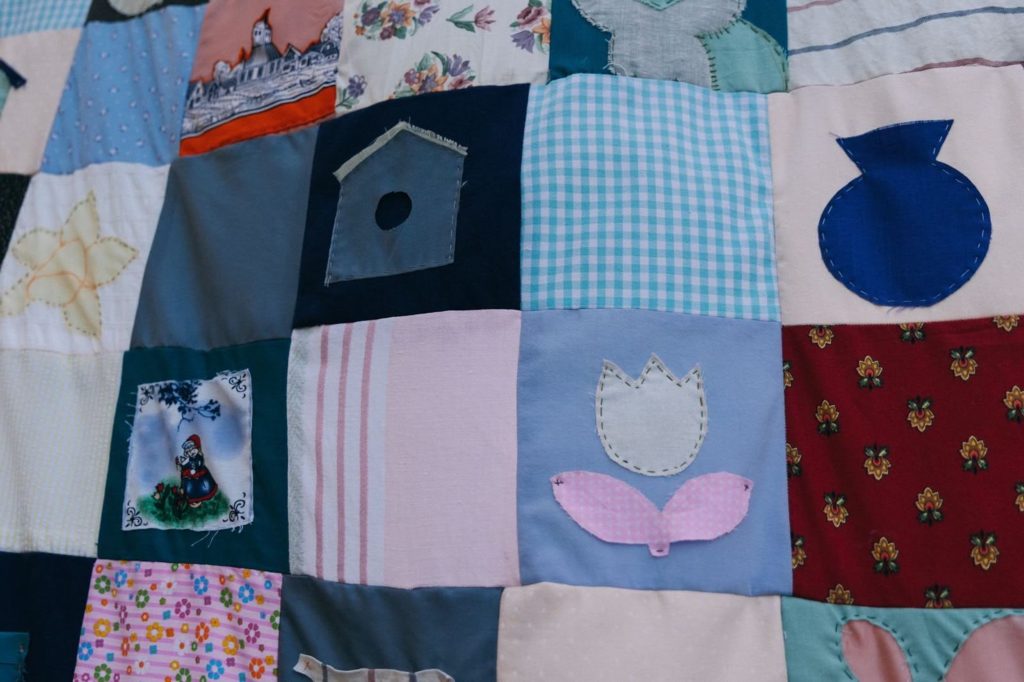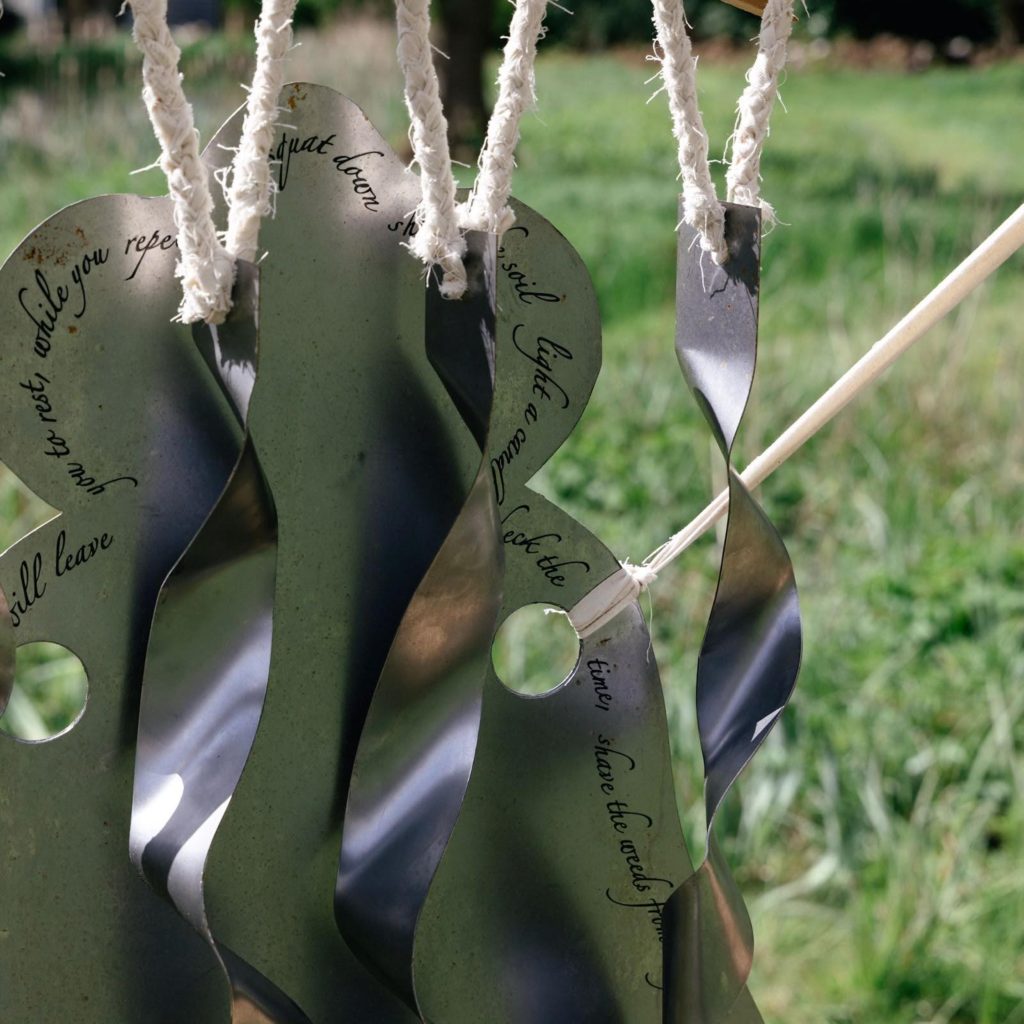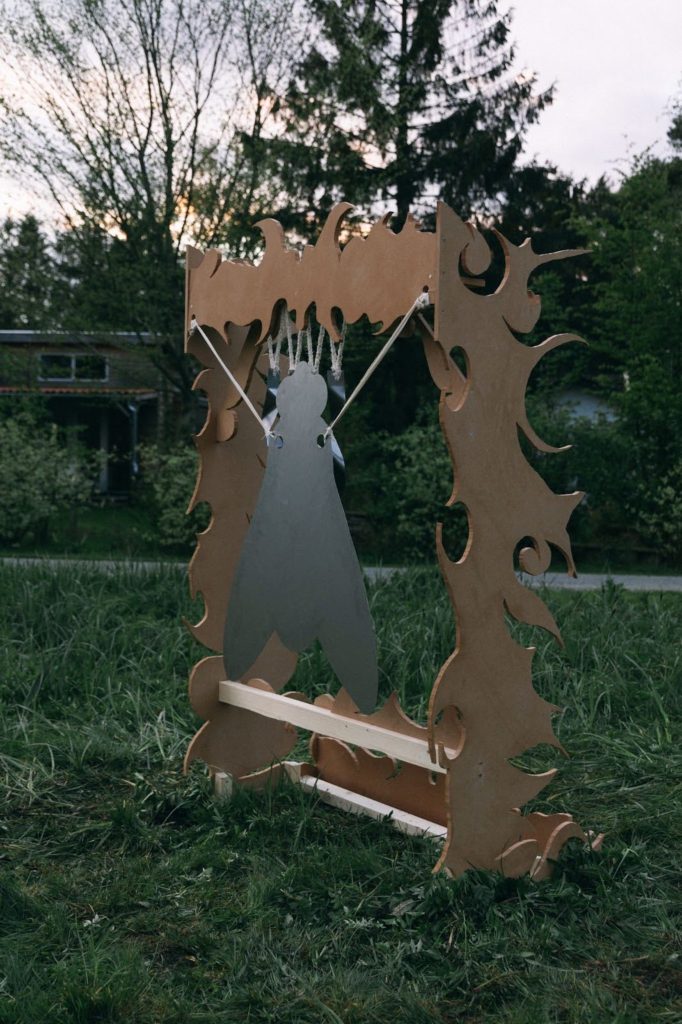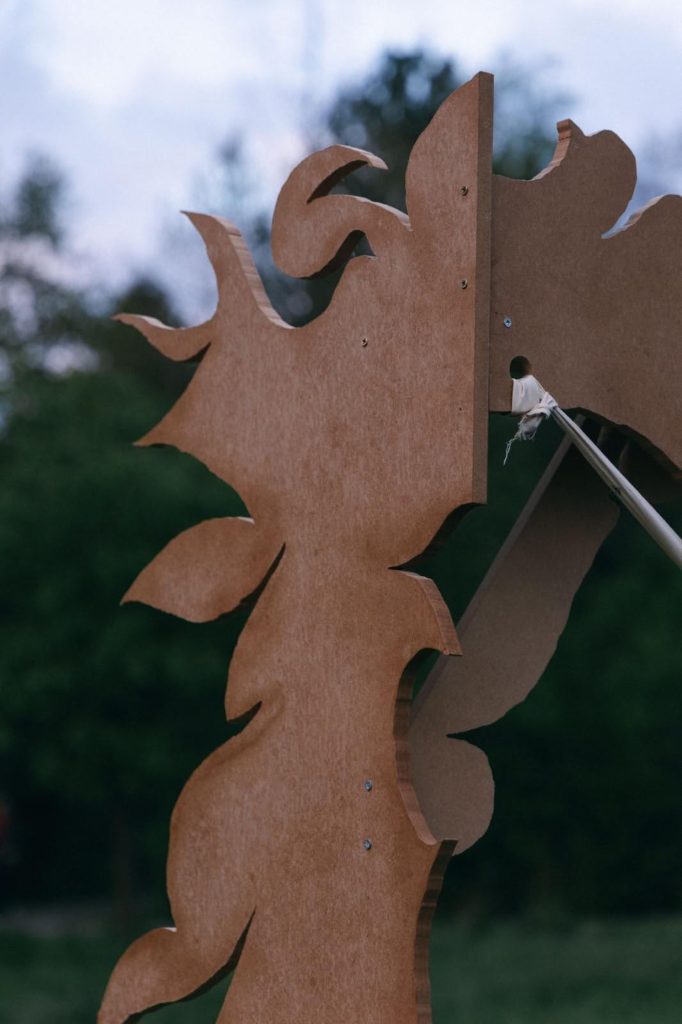THE REST: To be buried alive, and survive
On 4/20, while groups of students competed to see how much grass they could smoke to celebrate the unofficial holiday, Het Resort hosted the exhibition Long grass, short life at the Piccardthof.
Making my way there, I watch the cityscape recline and trees subsume its place. In all my years of living in Groningen, this natural quarter had evaded me. The shy sun gleams beautifully, glinting through branches as a gentle breeze rustles the leaves. Here, now, spring has undoubtedly arrived.
The Piccardthof is an “allotment garden complex”. In other words, it’s a community of members who rent grounds on which to build small, cozy shelters and tend gardens. In 1942, a Mr. Piccardt helped to fund the project on behalf of the municipal council. Beyond its usual relishing of comfort and leisure, during the aftermath of the second World War the complex helped to feed struggling Groningers. Today, though, that sense of collective action seems far behind.
I lose myself walking through the maze of garden homes and flowering plots of land. After briefly wondering if I would ever find the exhibition, I arrive at a prominently placed white cabin where two girls were unlocking their bikes. They smile at my confusion, probably having encountered it themselves, and direct me inside the cabin, the community hub.
Walking in, and then out again at the behest of some organizers, I finally arrive at the terrace with a small garden table laid with maps, pamphlets, and tea. Another pair of girls greet me kindly and we chat about the exhibition.
A quilt flutters in the wind. Its multi-colored patches sourced from members of Piccardthof by artist Beth Ka Yi Wong. Wong assembled them into a piece she entitled Simmer. I nodded at it approvingly, prompted by my own nostalgia and respect for the often disregarded (as most practical arts belittled as women’s crafts usually are) masterwork of quilt-making.
One of the girls raises herself from her seat, offering to guide me to the performance art piece that had driven me here in the first place: THE REST. Watching someone bury and unbury themself in a mound of dirt. This was the last day they would do it; having done it 4 times already within 3 days.
As we walk through, the girl leading me talks about the history of the Piccardthof and Het Resort; her dark brown and black hair and clothing standing in contrast with all the greens, pinks, whites, and purples that encircle us. She was interning with Het Resort, an art organization and residency program that started in 2018.
Since its inception, Het Resort has been arranging residencies where artists gather for two weeks at a location that has been selected each time to draw attention to neglected places or topics that they find important. The artists live and create in these spaces, bonding with it and channeling this connection through the pieces of work they create.
We stop briefly in front of a creation titled Resonance of a sticky situation by Naomi Hettiarachchige-Hubert. Silver spirals and a silver fly are held by a thin wooden carving of two-dimensional circles and waves. The wooden carving serves as an allegory to the image of a herald; an homage to both the artist, who sees herself in that role, and the member’s discontinued periodical, the Piccardthof Heraut (Herald). Meanwhile, the spirals reimagine sticky traps for flies as windchimes, both bearing the same shape. In the distance pearl colored cloth hangs with blue ribbons.
Together the piece asks: What is leisure? Who is allowed to leisure? Who can afford it? It makes one ponder how garden work is a rest for the mind while not so for the body; and requires owned outdoor space, which seems a far novelty as most Groningers are confined to interiors of crammed rented rooms.
Hettiarachchige-Hubert passes us in the other direction, carrying three beer bottles, as my guide and I continue walking.
Soon we arrive at a path of dirt and mulch. It crests upwards past growing vegetables towards a large mound with a head sprouting. “Looks like she’s already in the pit.” My guide says before saying goodbye and leaving me to make my own way towards the performance.

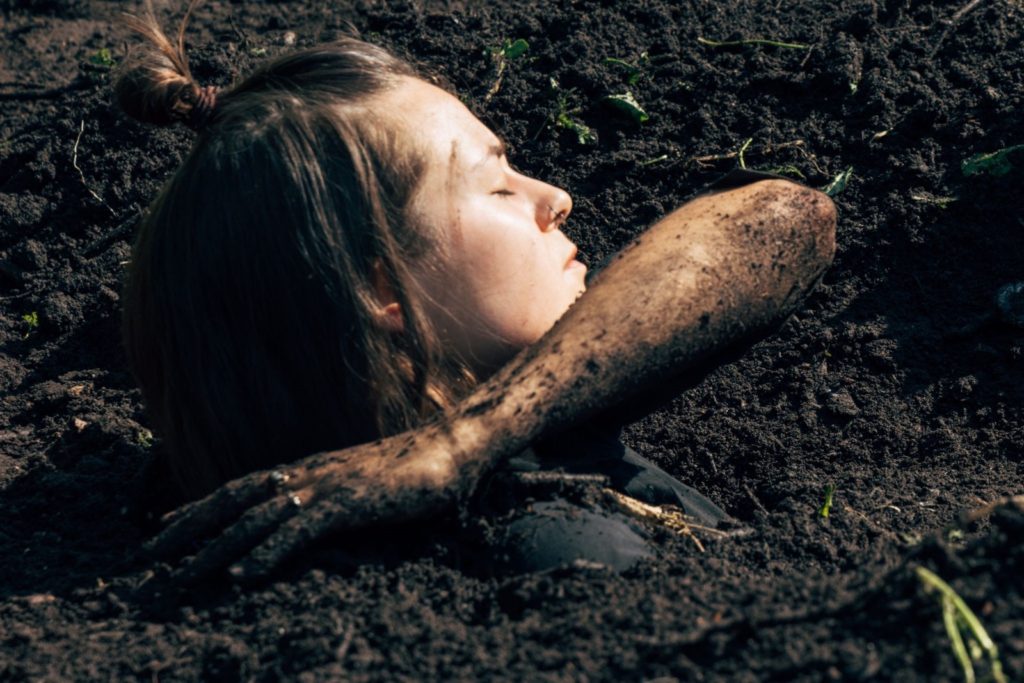
I walk towards the audience of onlookers to make my rank among them. They gaze in entrancement at Lily Dollner, the artist behind THE REST. Her soft eyes gleam with a mix of determination and exhaustion. It has taken her about an hour to bury herself.
With heavy breath she pushes her arms out from the earth. She cups her hands and begins to scoop. The tossed soil falls behind her in clouds of brown.
Beyond Dollner’s quiet groans and strains, there is a stillness that holds me fast. The songs of birds are so prominent and varied here it makes me remark on their absence in the city; a revelation I had only recently come to truly understand upon arriving back in Groningen after a couple weeks visiting family in my mother’s village, Piedralaves, in Spain.
Here, as is also the case in Piedralaves, the birds seem undisturbed by their competitor of sound – football fans. Beyond the thicket of trees near the performance, cheers accompanied by electronic music and the occasional Dutch trad song remix, resonate. Yet, this unseen rowdiness has no effect on the calm here.
The contrast between these two spaces separated by a tree line, one quiet and individualized, one loud and collectivized, made a curve appear on my lips. For me, this was a familiar juxtaposition. During long summers in Spain, I often found myself escaping to nature or burying myself in work to keep my hands busy so I could relax. Meanwhile, many others also enjoying holidays would unwind at the football pitch that lay at a crest of earth transforming to the mountains that wrapped the town. The position of the football pitch created a megaphone effect. Its rumble could be heard everywhere, in town and forest alike.


As Dollner continues to dig, I think of asking her questions. This impulse dies as I continue to watch her concentrated effort, sweat beads brimming her forehead above narrowing eyes. Instead, I reflect on how I had felt when I had toiled with soil in Piedralaves. There is an act of meditation that rests within hard work. While I cut back thorned branches, I blessed the silence of mind it arose. In honor of that, without disturbing Dollner, I kept my mouth shut and my eyes open.
My eyes did gaze down eventually at the pamphlet in my hand. Its monochromatic red ink on cream paper read:
Laborious actions that are, ultimately, in vain.
What labor is not in vain? All gains will be lost, eventually; exchanged for new labors.
I wonder how many times I had felt myself buried by stress and work to which no fruit arose; all the pits of despair I had thrown myself into after realizing all this digging would lead to no gold; how long it took me to unearth myself from these holes and how long it took me to fill them with things good for my soul.
I wonder how many times the repeated motions of the actions I had set myself to complete, whether valuable in a broader sense or not, had kept me going. The assortment of appointments and subjects I buried myself into allowed my mind to find places to reside that kept it from wandering too far and wide rather than forward. When I found myself in too deep, I pulled myself out. Though at points there was discomfort, pain, exhaustion, and exasperation, eventually I always landed with my feet on the ground. The cycle repeating making me stronger under tension.
I wonder when the time would come when I would no longer have the strength to unbury myself. A time that comes for everyone. Hopefully I could welcome it with the same peace and comfort that I am beginning to find with the cycle of labor and life.
After half an hour, Dollner pushes herself out. She picks up the shovel near the hole and uses it to push dirt to fill it. Her long, long hair dangles in tangles around her waist; clumps of soil sticking to its threads. As the earth swallows the hole once more, Dollner victoriously stakes the shovel into the ground. A vintage trailing suit jacket is picked from the ground and placed upon the handle. Her work done, she strolls confidently down the path that had led me here before disappearing into the green. We clap; and slowly, as if waking from a dream, follow her lead.

